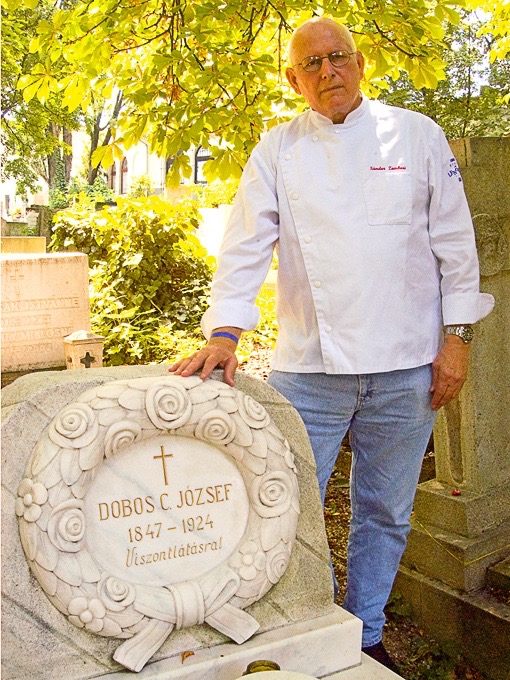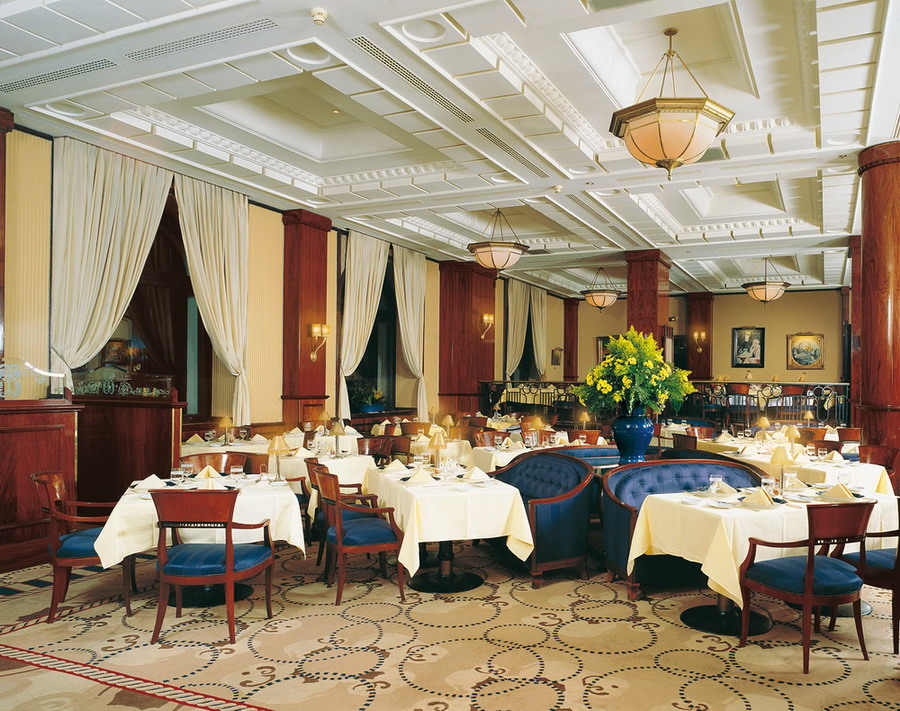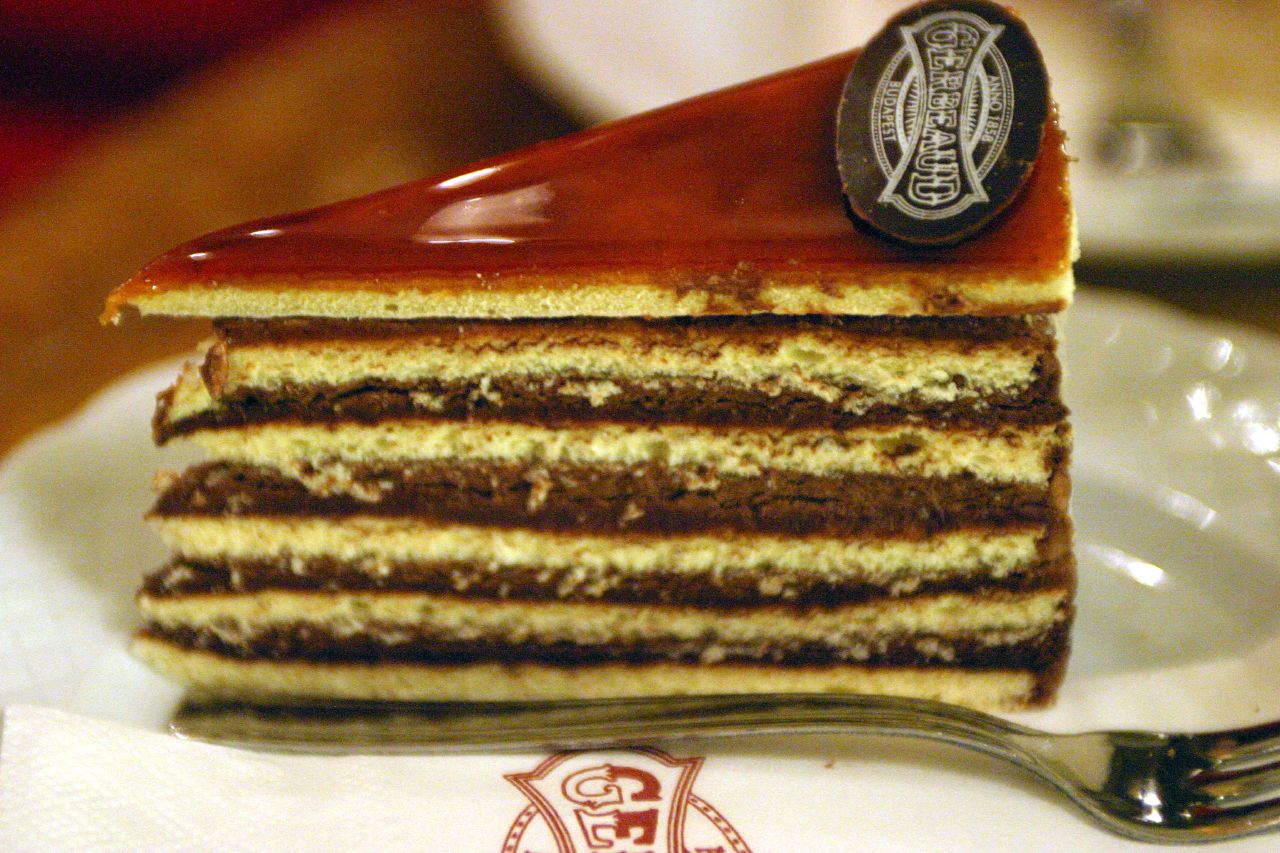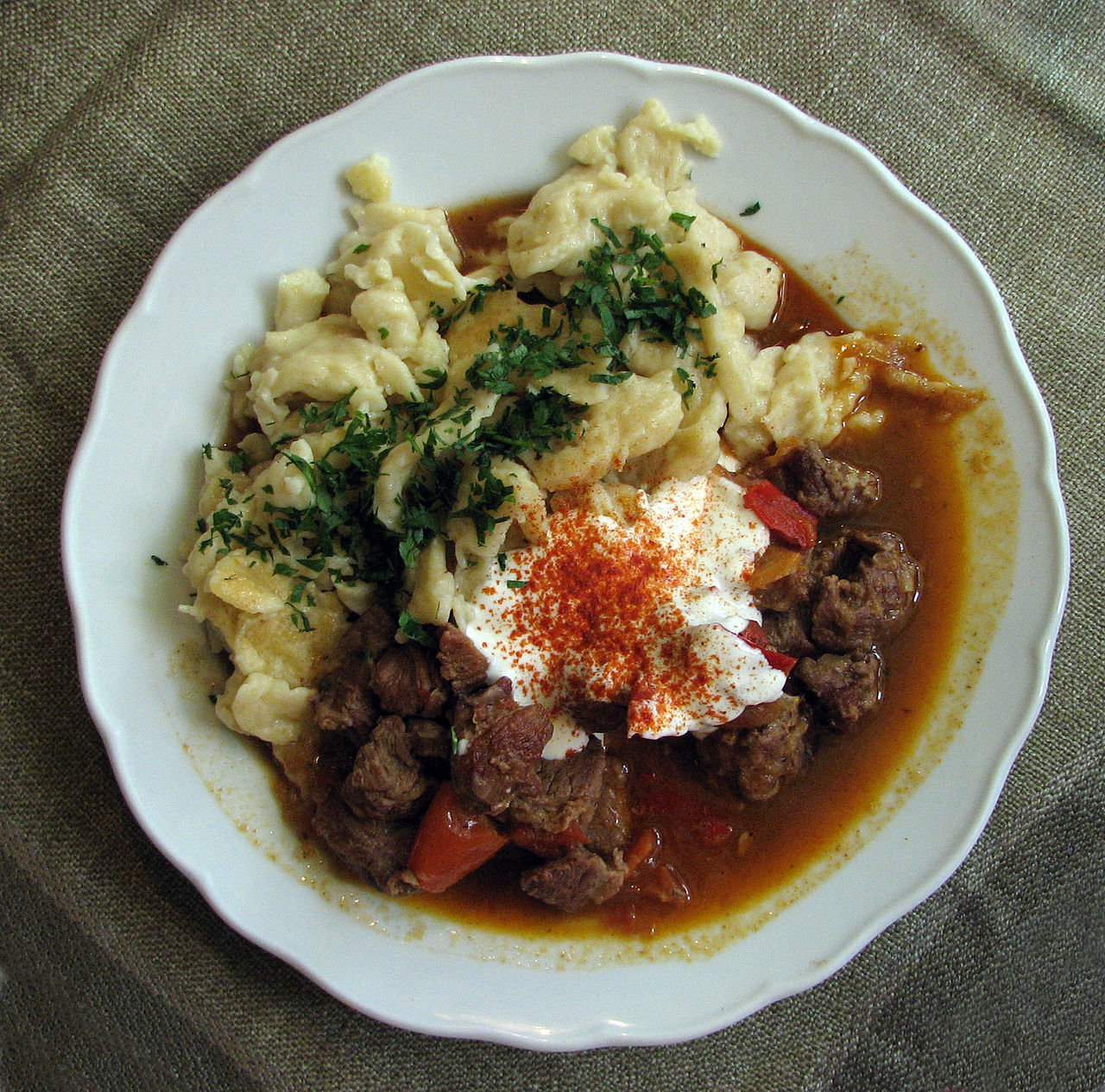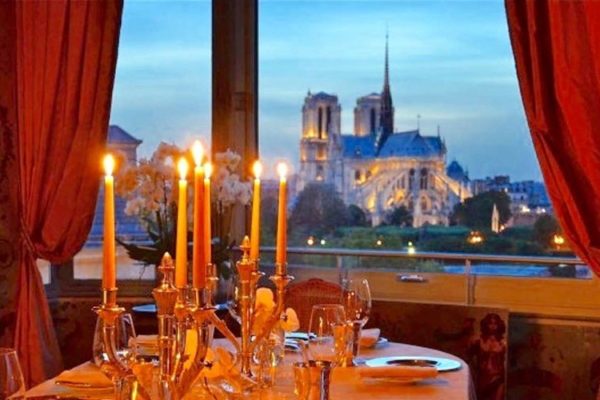Food Quest: Best of Budapest

Sumptuous decor and tempting treats at Café Gerbeaud, famous for Dobos Chocolate Torte. Photo courtesy of Café Gerbeaud.
a conversation with Chef Sandor Zombori
by Marla Norman, Publisher
“The key to good Goulash is Hungarian paprika. You can not substitute the stuff you get in supermarkets for authentic Hungarian paprika. And by the way, the correct spelling is Gulyás not Goulash.”
Chef Sandor Zombori is unequivocally emphatic. He doesn’t compromise when it comes to good food, and he is passionate about his native Hungarian cuisine. (His favorite recipe for Gulyás and a U.S.-based source for authentic Hungarian paprika appear at the end of this article.)
Born in Szeged, Hungary, he made his way to New York after World War II. There, he was first employed as a dishwasher by prominent restaurateur and fellow Hungarian, George Lang. He earned U.S. citizenship while serving tours of military duty both as a Ranger and Green Beret. Eventually, Zombori became a hardware engineer for Digital Equipment Corp. But his dream was to become a chef. So, Zombori attended Paris’ Cordon Bleu and earned his Master Chef title at the Ecole Ritz Escoffier.
When Chef Zombori finally opened his own restaurant, Sandor’s European Cuisine, in northern Florida’s Seagrove Beach, he would close down every January and work at renown restaurants around the world: Vong, Jean Georges, Le Bernardin, Cello, Lespinasse and Tabla. Back in his Florida kitchen, Chef Zombori would meld the techniques and flavors he acquired with his own Eastern European traditions. Now retired, Chef Zombori works special events and as a food & wine consultant.
CHEF ZOMBORI’S CHOICE: BUDAPEST’S RESTAURANTS
Brasserie Kárpátia
Ferenciek tere 7-8
Sixteen years after leaving Hungary, I finally returned to Budapest. The first place I wanted to visit was Kárpátia. It’s one of the oldest restaurants in Budapest, since 1877. I was craving the almond crepes they make there. For me, they’re something out of this world.
Bock Bisztro: Corinthia Hotel
Erzsébet krt. 43
Here you have one of the most famous chefs in Budapest – Lajos Bíró. He’s making Hungarian food a little leaner and updating it with Asian flavors. The restaurant was awarded the Michelin Bib Gourmand.
Onyx
Vörösmarty tér 7-8
The first restaurant in Hungary to win a Michelin star. It now has two. The food is beautiful and elegant. The building is also quite lovely – a restored Art Deco. I especially love the Cherry Soup, cooked with red wine and cream.
Kisbuda Gyöngye
Budakeszi út 5
This restaurant is somewhat difficult to find, but it’s well worth the effort. They serve excellent traditional Hungarian dishes like Kolozsvár or Stuffed Cabbage. Other dishes are Red Caviar Fried Potato Dumplings in Truffle Sauce and Hungarian Beefsteak with Goose Liver.
Gundel
Gundel Károly út 4
One of the best and most important restaurants in the country is Gundel. Károly Gundel spent years collecting traditional recipes from all over the country and then invented many original dishes. The Gundel Crepe is very famous. After the fall of the Soviets, George Lang purchased the restaurant, which was quite run down. I went to help him. When we reopened, it was a huge event. Even Queen Elizabeth and Pope John Paul II attended.
Hanna Orthodox Kosher Restaurant
Dob Str. 35
Simple menu, but very good, located in the old Jewish neighborhood.
A FEW MORE RECOMMENDATIONS
Café Gerbeaud
Vörösmarty tér 7-8
Both a cafe and pastry shop, founded in 1858. Sumptuous decor and tempting sweets. The perfect place to try Dobos Jozsef — a nine layer torte with chocolate in between each layer and a caramel topping.
Kiskakkuk
Pozsonyi út 12
Charming and homey, Kiskakkuk (The Little Cuckoo) was founded in 1913 and still serves classic Hungarian dishes: Veal Medallions, Lamb with Rosemary, Goose and Duck with Cabbage.
Fülemüle Étterem
Kőfaragó utca 5
Jewish Hungarian traditional menu with excellent house-made smoked meats and lecsó – a thick, flavorful garnishing sauce made from Hungarian peppers, paprika and bacon fat.
Centál Kávéház
Károlyi Mihály u. 9
Coffeehouses have a long tradition in Budapest, derived in part from the 150 years of Ottoman control. At the turn of the 20th Century, there were more than 400 coffeehouses in the city. Centál Kávéház provides an elegant service with heavy, old fashioned silver trays. The menu includes pancakes smothered in savory paprika sauce.
COOKING HUNGARIAN
Chef Zombori’s Favorite Gulyás
Makes 4-6 servings
Time to prepare 2 hours & 45 minutes
NOTE: Authentic Hungarian paprika and Tarhanoye (Hungarian version of couscous) can be purchased through Bende: producer/importer of Hungarian products.
Ingredients
1 strip bacon
2 onions, medium diced
1 tablespoon olive oil
2 1/2 pounds stewing beef, cut into 1/2-inch cubes
1 garlic clove
Pinch caraway seeds
2 tablespoons authentic Hungarian sweet paprika (Can be ordered through Bende.)
2 cups warm water
2 cubes beef bouillon
2 whole canned tomatoes, chopped
1 green bell pepper
4 or 5 potatoes
2 tablespoons sour cream, plus more for plating
Tarhanoye (Can be ordered through Bende.) or 1 pound prepared spaetzle, as an accompaniment.
Directions
In a cold, heavy 6 to 8-quart stewing pot, fry bacon over low-medium heat until fat is rendered, and then discard bacon slice.
Sauté onions in the bacon fat for a few minutes, do not allow the onions to brown. If bacon does not provide enough fat, add a little olive oil to prevent the onions from sticking. When onions become glossy, add the beef, sautéing with the onions for about 10 minutes, covered, until the meat is browned.
Meanwhile, chop and crush the garlic with the caraway seeds; add to meat and onions. Remove pot from heat. Stir in paprika rapidly with a wooden spoon. Immediately after paprika is absorbed, add the warm water. The water should just cover the meat, leaving room for potatoes.
Add beef bouillon cubes. Cover pot and cook over low heat for about 1 hour.
While stew is braising, prepare the tomatoes by cutting into 1-inch pieces. Core green peppers and cut into strips. After 1 hour of braising, add the tomatoes and green pepper. Add a little more water, if necessary and a little more salt if you need it. Simmer slowly for another 30 minutes.
Peel potatoes and cut into bite-sized cubes and set aside in a bowl of water. Add potatoes, and cook another 30 minutes until the potatoes are fork tender and the Gulyás is done.
Once the Gulyás is finished, dissolve sour cream and a little of the Gulyás sauce in a cup. Add to the Gulyás to give a creamy consistency. Serve the Gulyás with either Tarhanoye or spaetzle on the side, adding an extra dollop of sour cream to each plate.


